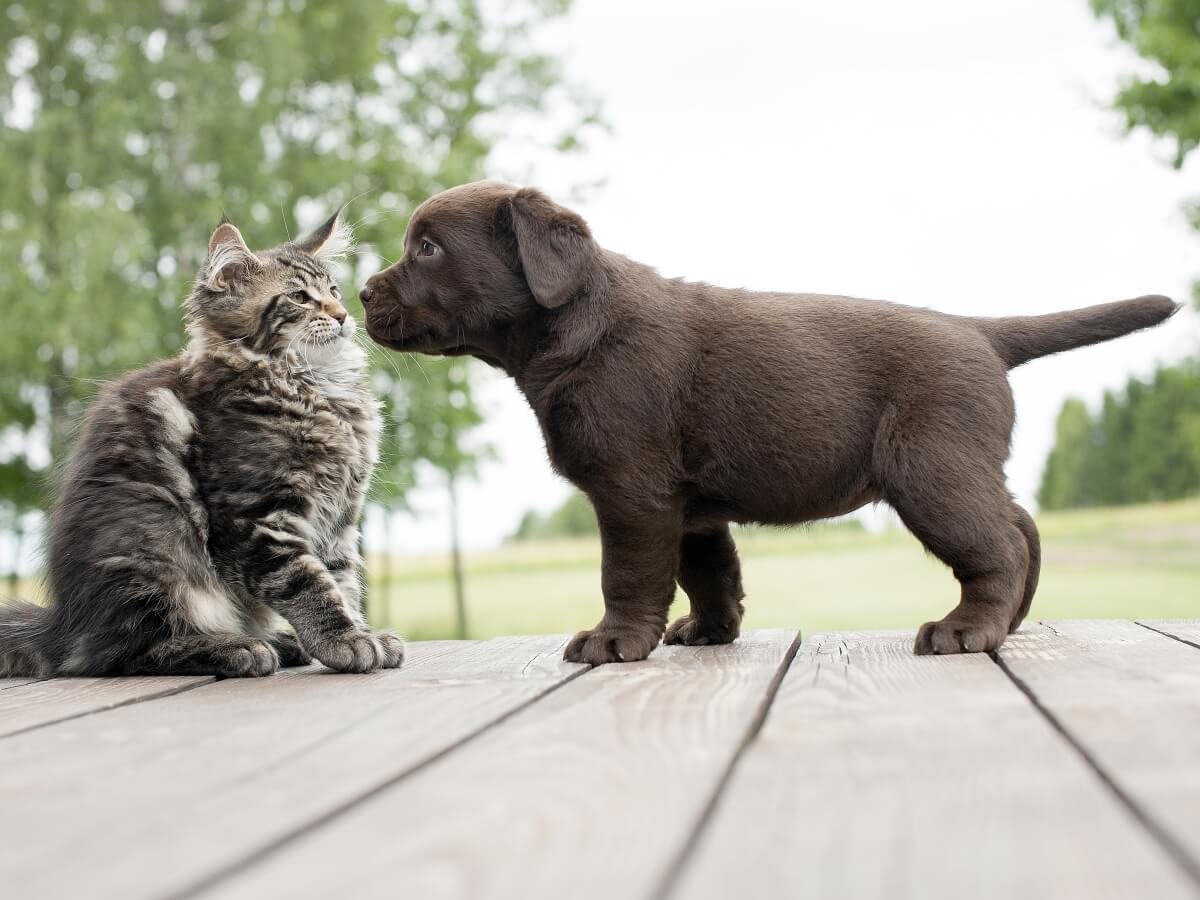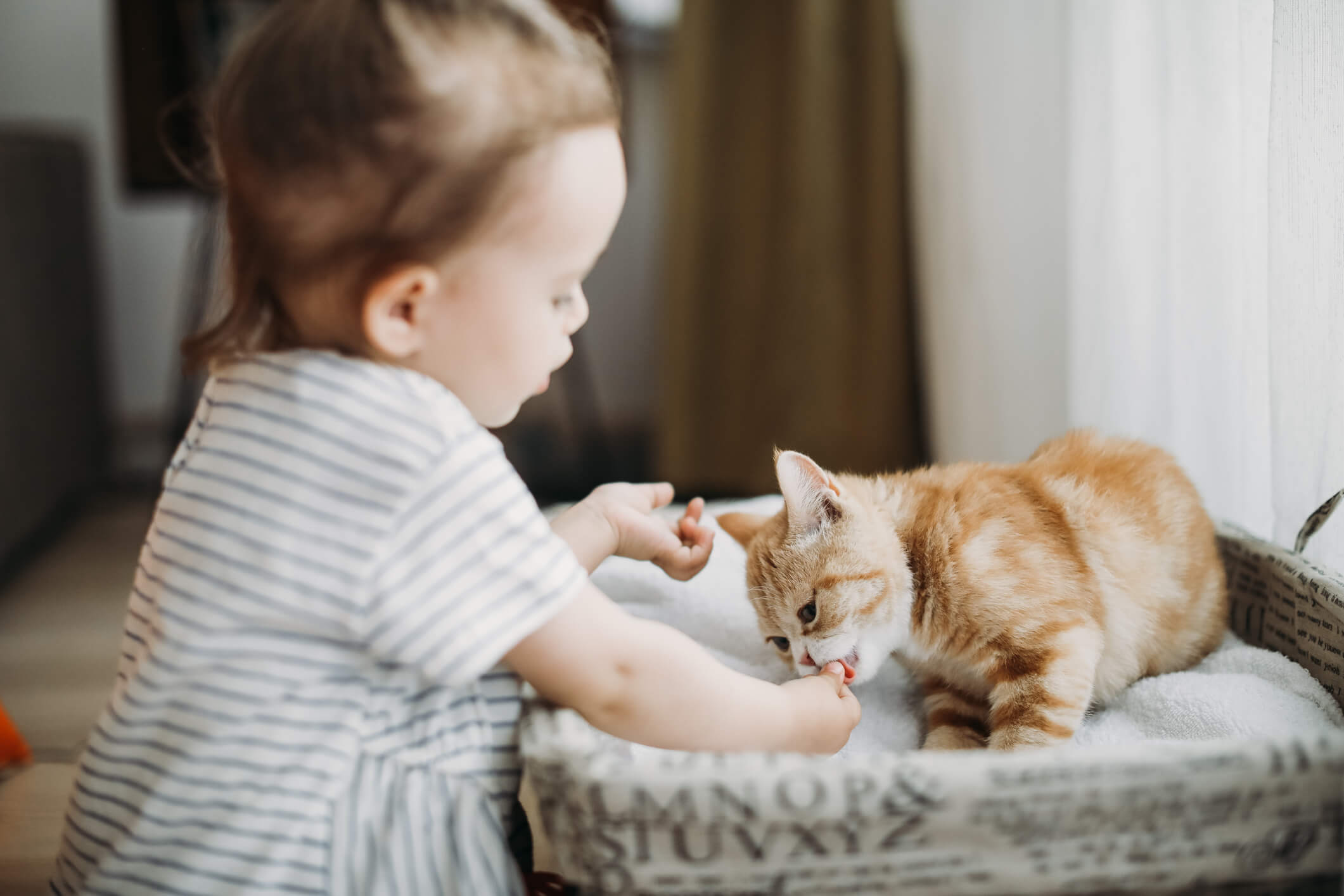
How to Introduce New Family Members—2 Legged and 4 Legged
Every pet parent can recall the moment when they first locked eyes with their furry companion. You found them in the shelter and immediately knew the bond was there! However, while you two might get along great, you also have to consider if and how the new pet will mesh with others in the house.
Parents of newborn children encounter a similar conundrum, hoping their pet at home will respond positively to their newest family member. With time and a whole lot of patience, everyone under the same roof can become best buddies—or, at the very least, tolerate each other’s presence. Here’s how to make pet and family introductions work.
Introducing a new dog to your resident cat
Cats and dogs have a reputation for not getting along. But it doesn’t have to be this way! Both animals are perfectly capable of co-existing with each other and possibly even becoming good friends.

Here are some tips that will help your new dog and resident cat start their relationship on the right foot (or paw):
- Establish high perches for the cat: Cats are often skittish around new people and pets. Make sure your resident cat has plenty of escape routes throughout the home where they can take a break from the new dog’s presence. Cats prefer high elevations like cat trees, window sills and shelves.
- Give each pet their own room: Cats and dogs should become familiar with each other’s scents before meeting face to face. During the first several weeks, isolate them both in separate rooms with bedding, food, water and a litter box for the cat. Let your new dog roam the house, and then let your kitty do the same. This allows the resident cat to get used to a new scent in their territory.
- Calm your pup before meetings: Your cat will run and hide if your new dog is exploding with energy! Introduce both pets when the dog is at their calmest—usually right after a long walk or rigorous play session. Calm energy sets a good foundation for successful meet and greets.
Introducing fur babies and newborns
Many young couples start their new life together with a fur baby. One day, your dog will be surprised to find out they’re not the only baby anymore! Newborns create a shift in routine, both for you and your pet.
Minimize stress by following these tips for a smooth introduction:
- Make the baby’s presence feel normal: Start off by having the resident dog and your baby co-exist in the same room. Don’t force them to interact with each other—instead, go about your daily routine as if nothing has changed. The dog will slowly acclimate to your baby’s presence from the other side of the room.
- Keep your dog on a leash: If you are having a baby for the first time, you won’t know how the dog behaves around an infant. During the first few meet and greets, allow your resident dog to approach on a leash while someone else holds the baby. That way, the person holding the leash can maintain control in case your dog responds in an aggressive manner.
- Give praise, not punishment: Meetings should always remain brief and positive. Instead of scolding your dog for aggressive behavior, simply guide them into a separate room until they calm down. Reward gentle sniffs and good behavior with a low, soothing voice. This has the added benefit of keeping your baby calm, too!

Introducing an adult cat to a new kitten
Your adult cat has ruled the home—until now. They’ll probably feel a bit threatened by the idea of sharing their territory with a new, energetic kitten. Rest assured both cats will grow accustomed to their new roles in the family hierarchy.
Follow these tips to get started:
- Establish a safe space for the kitten: Your new cat has to acclimate themselves to the home before they’re ready to meet the resident cat. Reserve a room for the kitten that has bedding, food, water, toys and litter. Only the kitten is allowed in here, and this is where they’ll hang out in between supervised play sessions with the other cat.
- Give them objects with each other’s scent: Before they meet in person, both cats should receive an object that has the other’s scent on it. The object could be a toy, blanket, pillow or wash cloth. That way, the cats will already recognize each other when they finally get to meet.
People and pets all have different backgrounds and personalities. One person might adopt an animal who loves people, while another might adopt a rescue with a traumatic past. Maybe you only have one resident pet, but someone else could have four! No matter your situation, these guidelines will put you on the right track toward making peace among the two- and- four legged members of your family.


